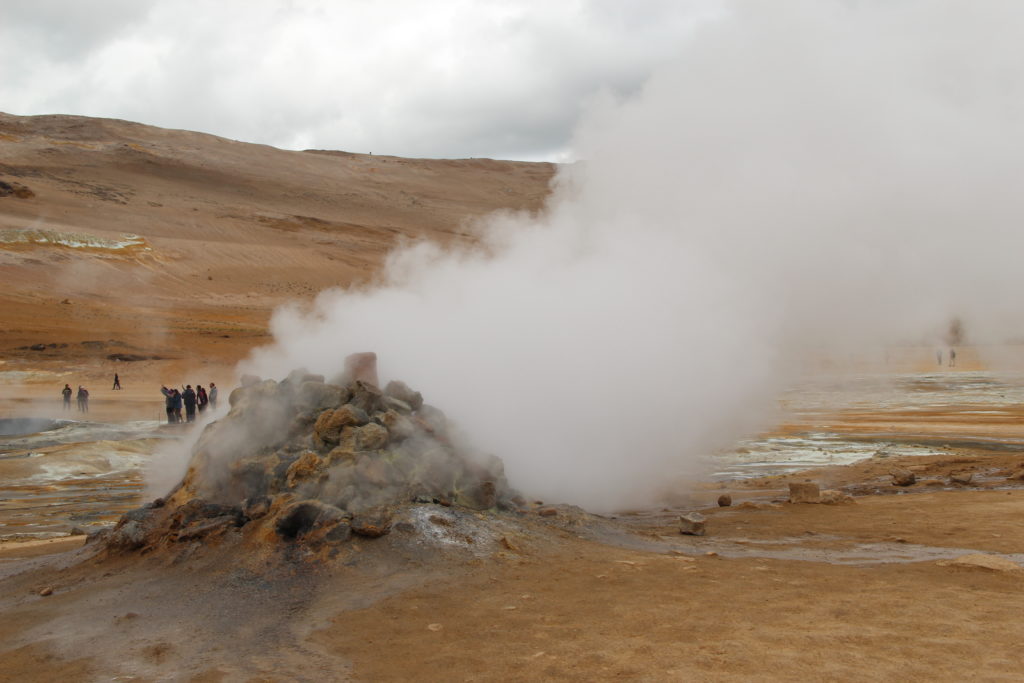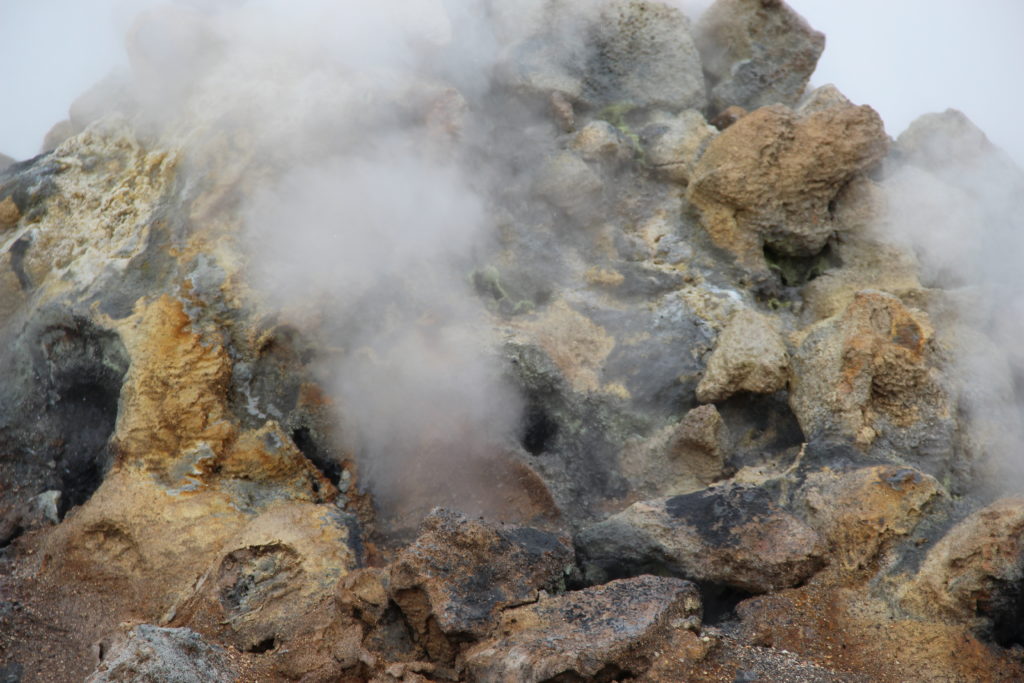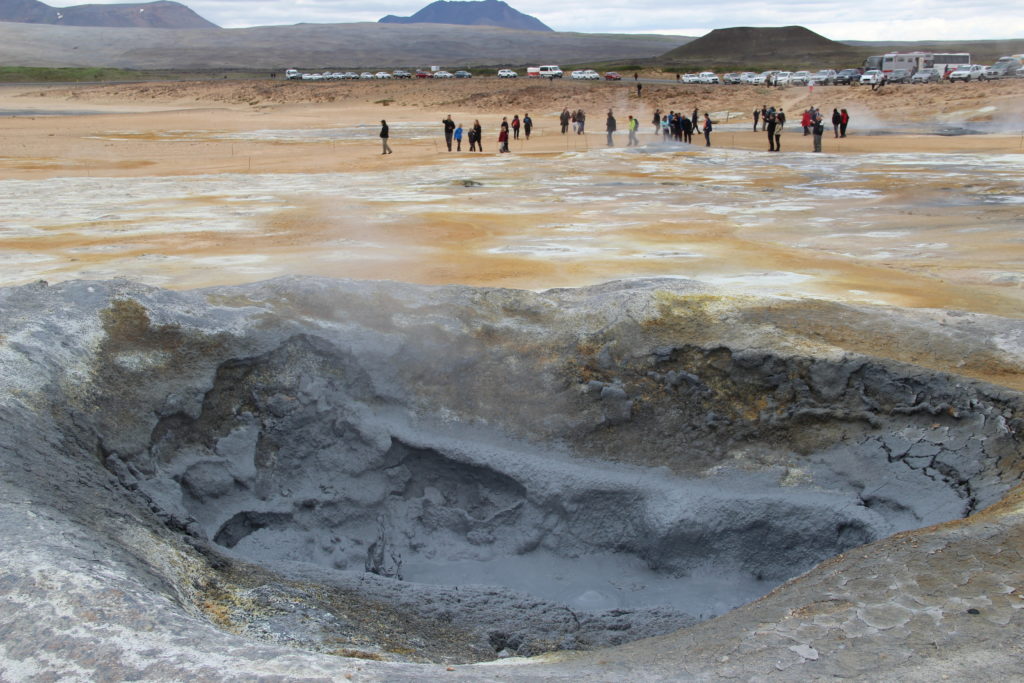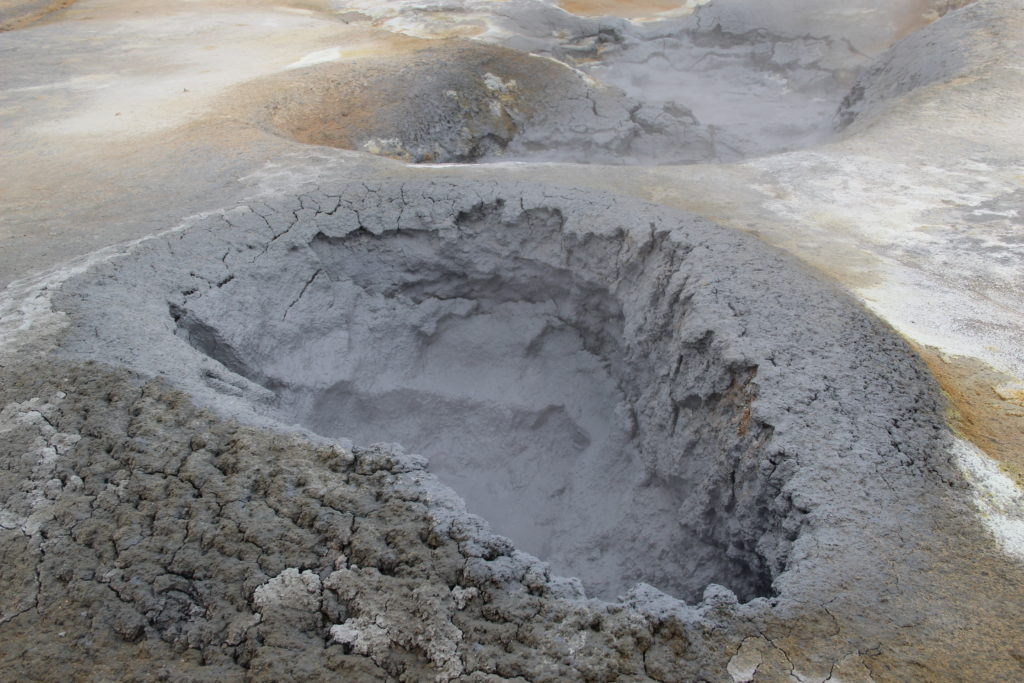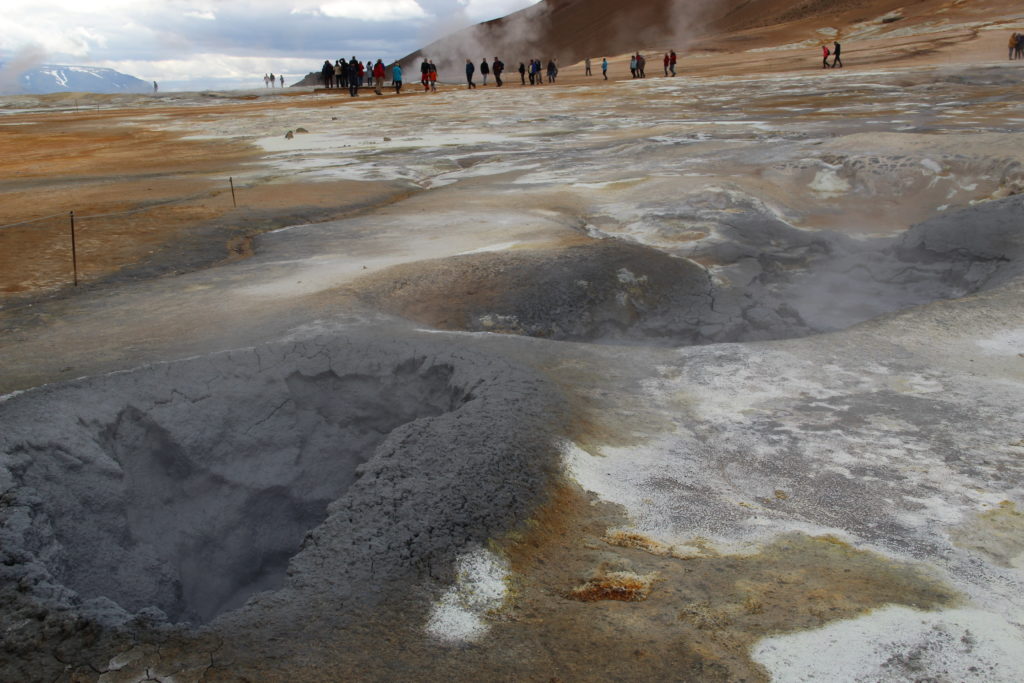
Akureyri Port
After leaving Grimsey Island, our next port of call was Akureyri. It was a busy day – there were four stops, the first of which was the Godafoss Waterfall, or the Waterfall of the Gods. It was named in 1,000 AD when the Parliament declared that Iceland would be a Christian country. The Godafoss Waterfall is located in the Skjalfandafljot River. It is one of the largest waterfalls in Iceland. The Skjalfandafljot River runs across a lava field which is approximately 7,000 years old. Rocks divide the water into two main falls and a few smaller ones. There were hiking paths around the falls allowing us to see it from different perspectives.
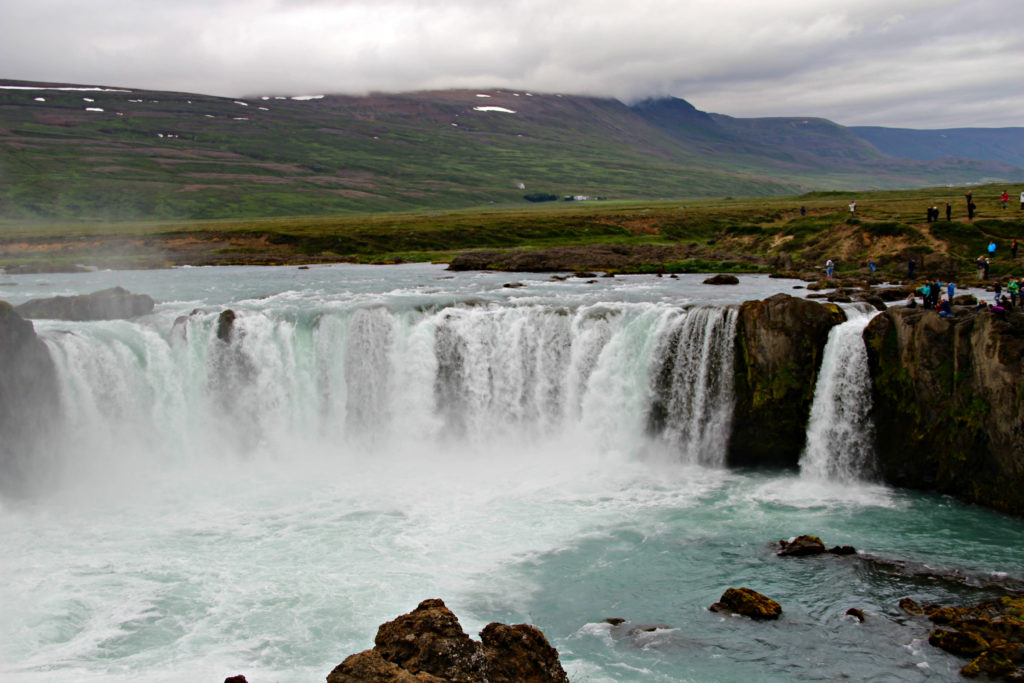


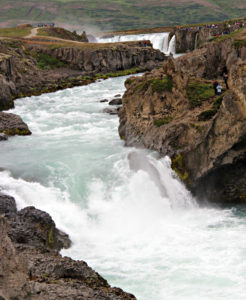

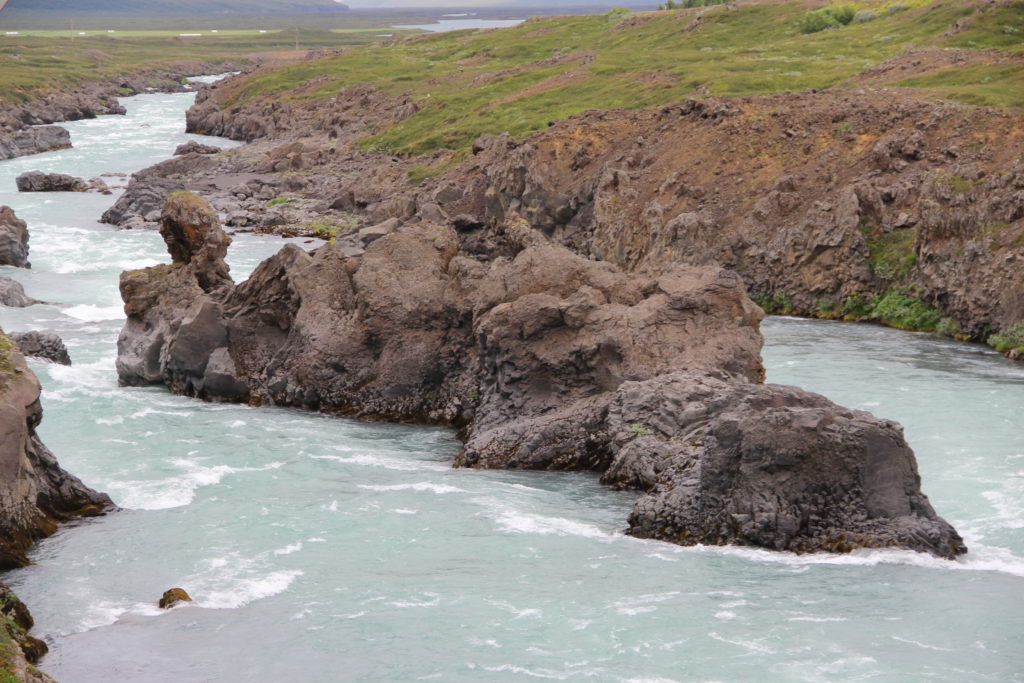
Our next stop was Dimmuborgir, a lava field with unusually-shaped volcanic caves and rock formations. They are sometimes referred to as black castles. It is estimated that this area was formed 2,300 years ago. A volcanic eruption resulted in lava pooling over a small lake. Steam moved through the lava resulting in the lava pillars.
One of the pictures below shows a circular opening with three people standing in it. This formation is known as “the church.” We also hiked to this opening, although I will admit that some younger hikers from another group helped pull me up the last few feet! As you can probably imagine, walking through the lava fields made us feel like we were on another planet.
According to Icelandic folklore, Dimmuborgir is the home of a troll named Gryla, her third husband and their sons, the Yule Lads. The Yule Lads are similar to Santa Claus, bringing gifts to children who are good but leaving rotten potatoes in the children’s shoes if they have not behaved. The Yule Lads supposedly live in the rocks and the cave pictured below which is surrounded by rope. You can find books or information on the web about the Yule Lads – I was intrigued with them and purchased some Yule Lad figurines for Christmas gifts. If you are interested in different Christmas traditions, you would probably enjoy reading about them.
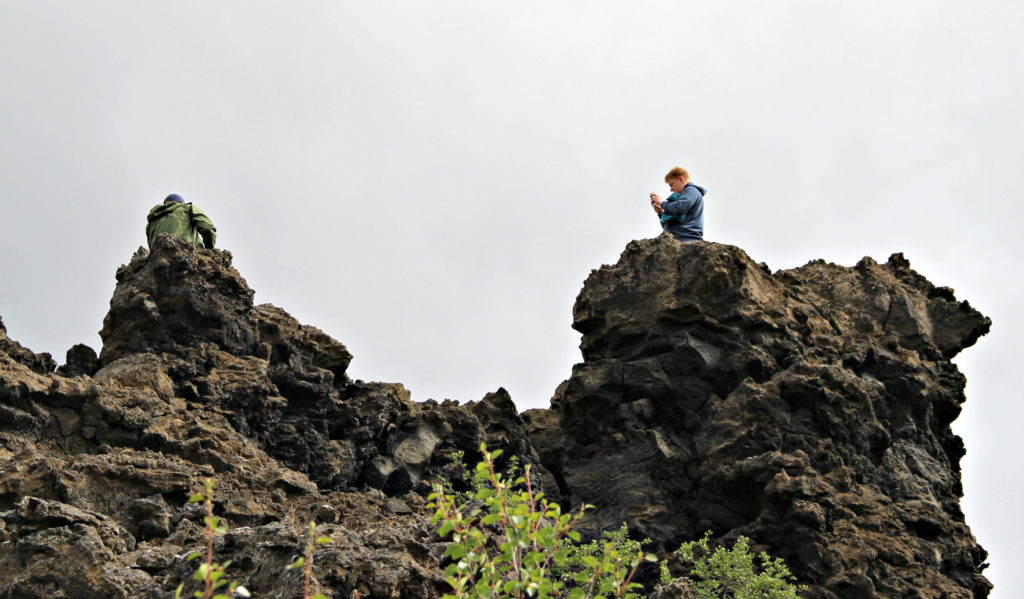
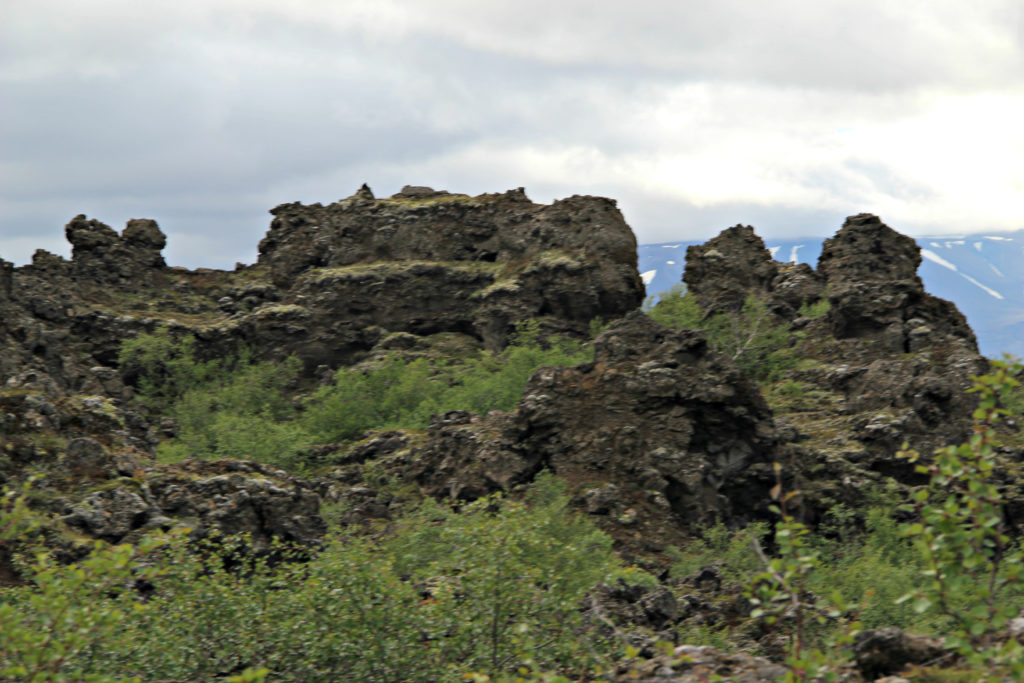
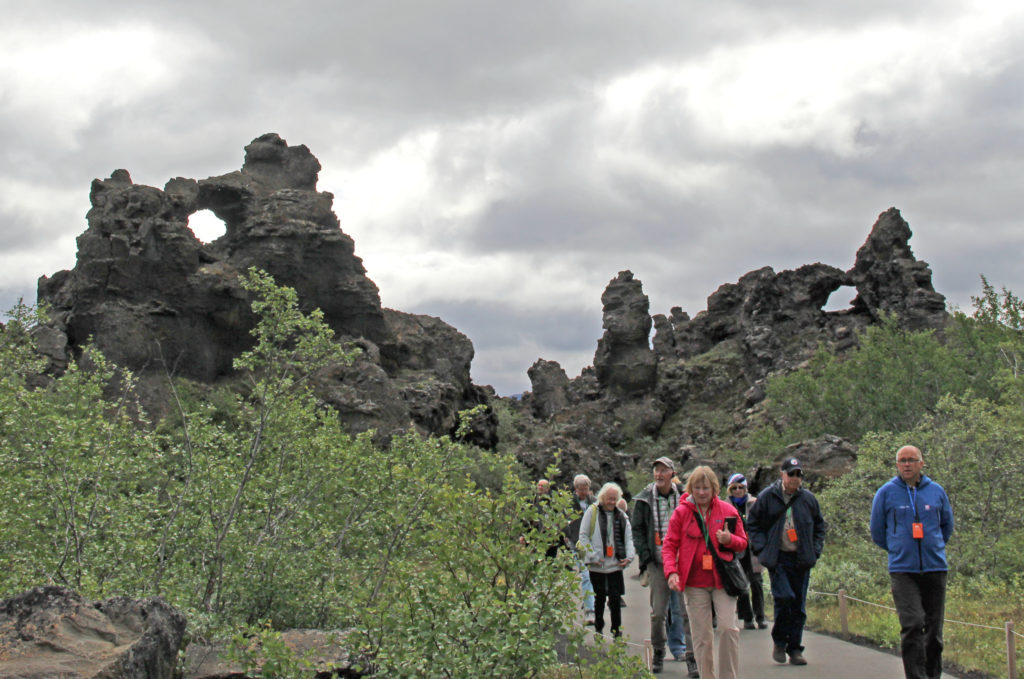
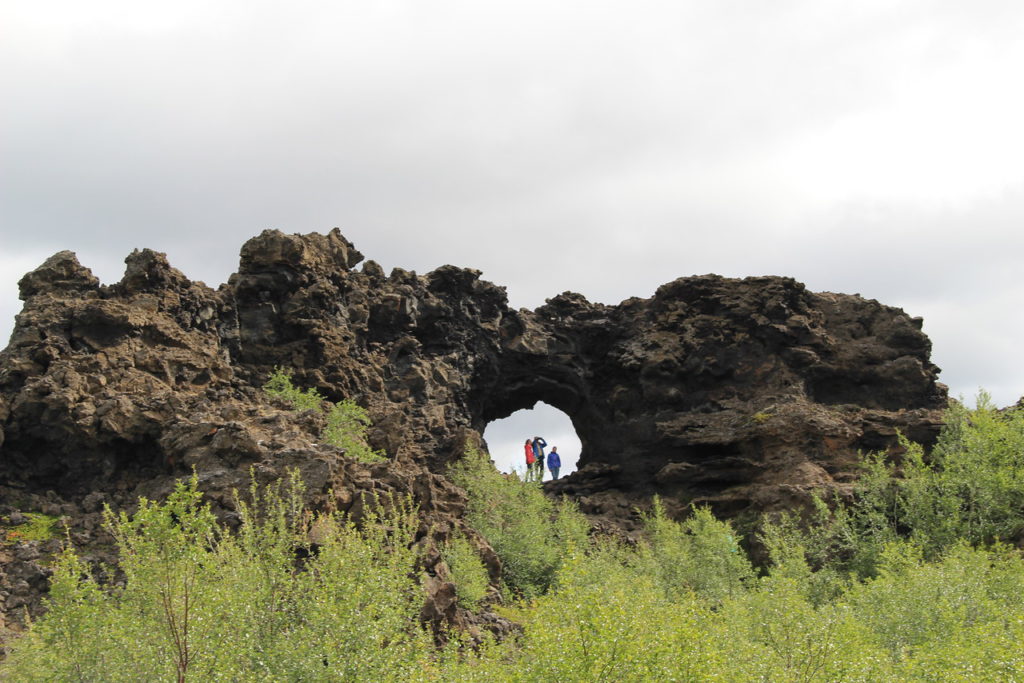
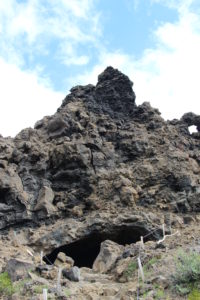
Our third stop was the Skutustadagigar pseudo craters. Water and steam were also involved in the formation of the pseudo craters. They resemble a volcanic crater but lava did not erupt from them so they are different. During the formation of pseudo craters, hot lava crosses over wet surfaces, such as a swamp or lake. Pressure builds and steam explodes through the lava surface resulting in the pseduo craters. Pseudo craters were first discovered on Mars. Some NASA scientists actually come to Iceland to help them understand what they are seeing in photographs from Mars. When the Eyjafjallajokull Volcano erupted in 2010 (this volcano is also in Iceland), scientists were able to observe the formation of pseudo craters.
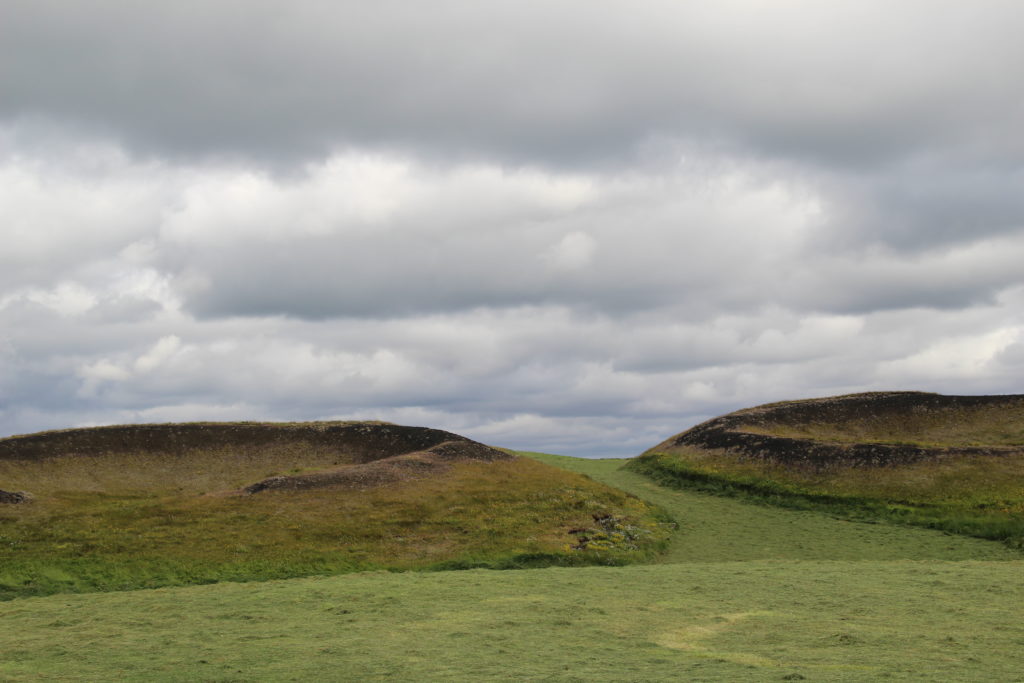
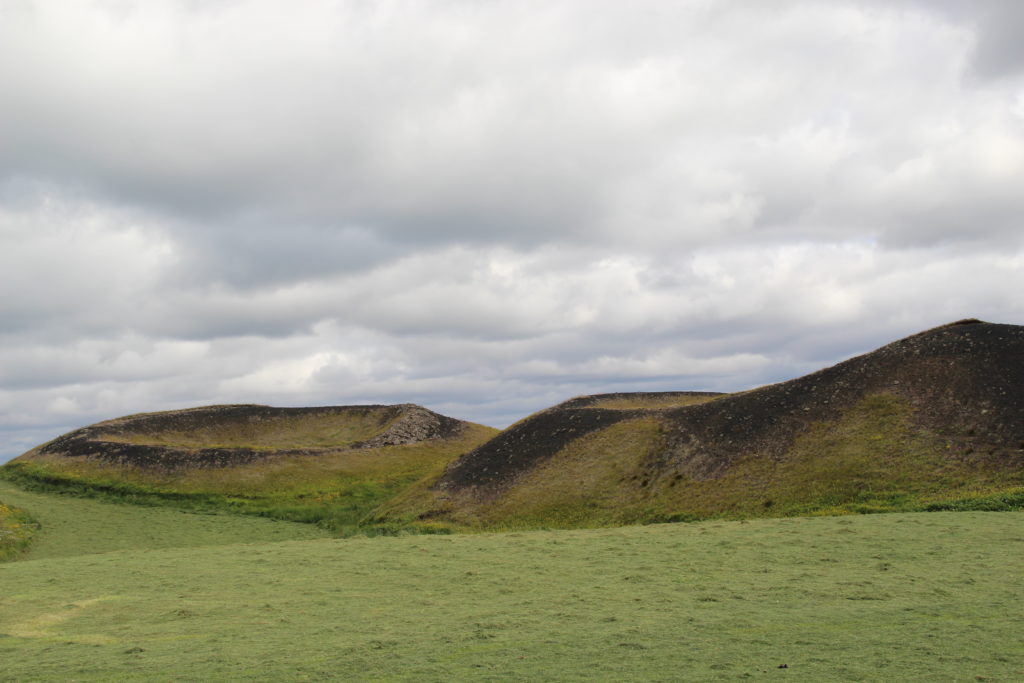

Our last stop of the day was at a geothermal area called Hverarond. It lies at the foothills of a volcanic mountain, Namafjall. Volcanoes push magna closer to the earth’s surface. This intense heat, when it comes in contact with ground water, creates the unusual landscape. As we walked around Hverarond, we saw steam springs called fumaroles, sulphurous mud springs, mud pools and mud pots. The beautiful colors are the result of the minerals present. This was another other-worldly experience!
